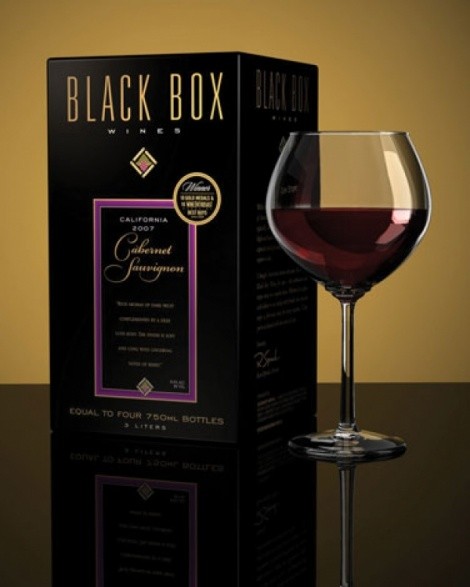
Here’s why: First, box wines aren’t crap. Mostly. Some are, but those are fairly easy to recognize. If the price seems too good to be true, it probably is. And then there are inferior, sweet, flabby wines that are blends labeled as “Chablis” or “Burgundy” and have virtually nothing in common with the actual varietals that are Chablis and Burgundy. Watch out for those. But, there are also a lot of high-quality wines these days being sold in boxes and Tetra Paks.
Here’s how box wines work: Most box wines are sold in 3-liter boxes. A sturdy cardboard box envelops a three-layer bag with a spout for pouring. In that bag is 3 liters of wine, or the equivalent of four 750 ml. bottles. The spout has a small push button and is easily opened and accessed—no cork, no corkscrew, no problems with corked wine. But, perhaps the biggest advantage to boxed wines versus bottles is that they are perfect for anyone who drinks only a glass or two of wine each day or each week. That’s because they inhibit oxidation to a point where it’s virtually nonexistent.
When you pour wine out from your box, the bag inside collapses upon itself, leaving almost no room for oxygen to sneak in and destroy the wine. Even after weeks of opening a box wine, I often can’t detect any evidence of oxidation. Once a bottle of wine is opened, by contrast, it rarely lasts in the fridge for more than a day or two before becoming oxidized.
Tetra Pak wines are a little different. For all practical purposes, they’re the same as wine bottles, but are lightweight, made primarily from paper and use 92 percent less packaging to deliver the same amount of wine and 54 percent less energy to make than glass bottles. Most are recyclable. The wine won’t last any longer than bottled wine in terms of oxidation potential, but wine in Tetra Paks is convenient for camping, rafting, picnics, hiking, boating and such, when you don’t want to carry around heavy glass bottles of vino.
So, which Tetra Paks should you buy? One of my favorites is French Rabbit, which is made by the folks at DeLoach and sold in 1,000 ml. Tetra Paks. I’ve tried the Pinot Noir and Chardonnay and found them both to be very good. Another of my favorite Tetra Pak wines is Yellow Blue, which produces certified-organic Malbec and Torrontes, among other varietals. Three Thieves Cabernet and Pinot Grigio are solid wines, too, and the company even makes Tetra Pak sangria for your picnic.
For box wines, I’m partial to the aforementioned Black Box wines from Monterey. A 3,000 ml. box of Black Box Chardonnay is a great way to get a party started. And their Cabernet Sauvignon is equally appealing. From France’s Luberon, you can enjoy one of my favorite house wines—La Vieille Ferme—in a box. I like the rouge but enjoy the blanc even more, a pretty blend of Grenache blanc, Bourboulenc, Ugni blanc and Roussanne. So, feel free to box me in.